
Picture this: I was walking my dog on a leash. We were fancifully walking, enjoying the grasses on the sidewalk, happily listening to the honks and beeps of cars passing us by, and just plain bonding with each other.
Suddenly, another dog appeared out of a street corner. And quite unexpectedly, my dog started lunging after the dog. It was the start of a game of tug-of-war.
Sounds familiar? I’d bet you would have the same experience once or a few times.
Be it towards humans or other pets, dogs are naturally friendly. Our canine companions are social animals born to interact with other dogs. While this would prove advantageous as a key to developing their social behaviors, it also has its downside.
Sometimes, dogs may become too excited and start jumping, barking, and growling at other dogs. This can be dangerous, especially if they encounter aggressive or stray dogs. Hence, teaching your dog to ignore other dogs when necessary is also essential.
In this blog post, we’ll explore expert tips on how to train your dog to ignore other dogs, allowing you to enjoy stress-free and enjoyable walks together.
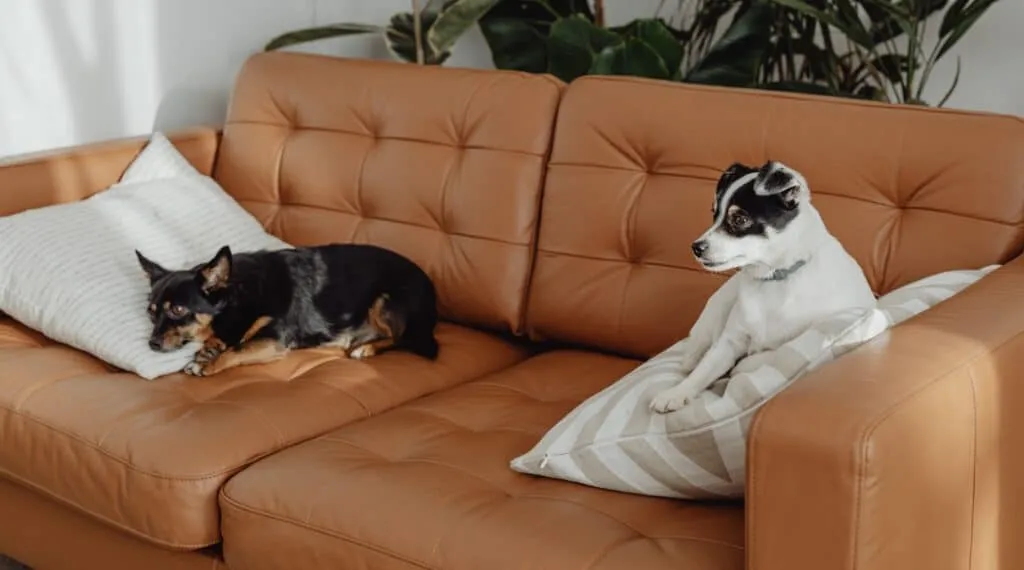
Understanding the Behavior
There are several reasons why dogs have the tendency not to ignore other dogs. In most cases, dogs just want to associate or socialize with other dogs. But there are dogs that can turn aggressive towards other canines.
Here are the common factors that affect a dog’s behavior towards other dogs.
Pack Mentality
Understanding the pack mentality in dogs is essential for every pet owner. It is this pack mentality that leads them to get excited in the presence of other dogs.
Dogs are naturally social and have a strong instinct to form a pack hierarchy. Every member of a pack plays a specific role, and it’s important to understand how this social structure affects your dog’s behavior.
In the wild, dogs hunt and survive in packs. The pack is led by an alpha dog, who is the dominant member and is responsible for leading and protecting the other members. The beta dogs are the second in command and assist the alpha in maintaining order and control. Other members are subordinates, and their role is to follow the rules.
When living with humans, dogs still have this innate pack mentality, and they will look to their human family to establish their pack hierarchy. If the dog perceives itself as the pack leader, behavioral issues can arise.
Dog owners must establish rules and boundaries early on so that their canine companions will recognize that you, the dog owner, are the alpha of the pack. Your dog would acknowledge that he is a subordinate and has to obey your rules. It would definitely help in obedience training.
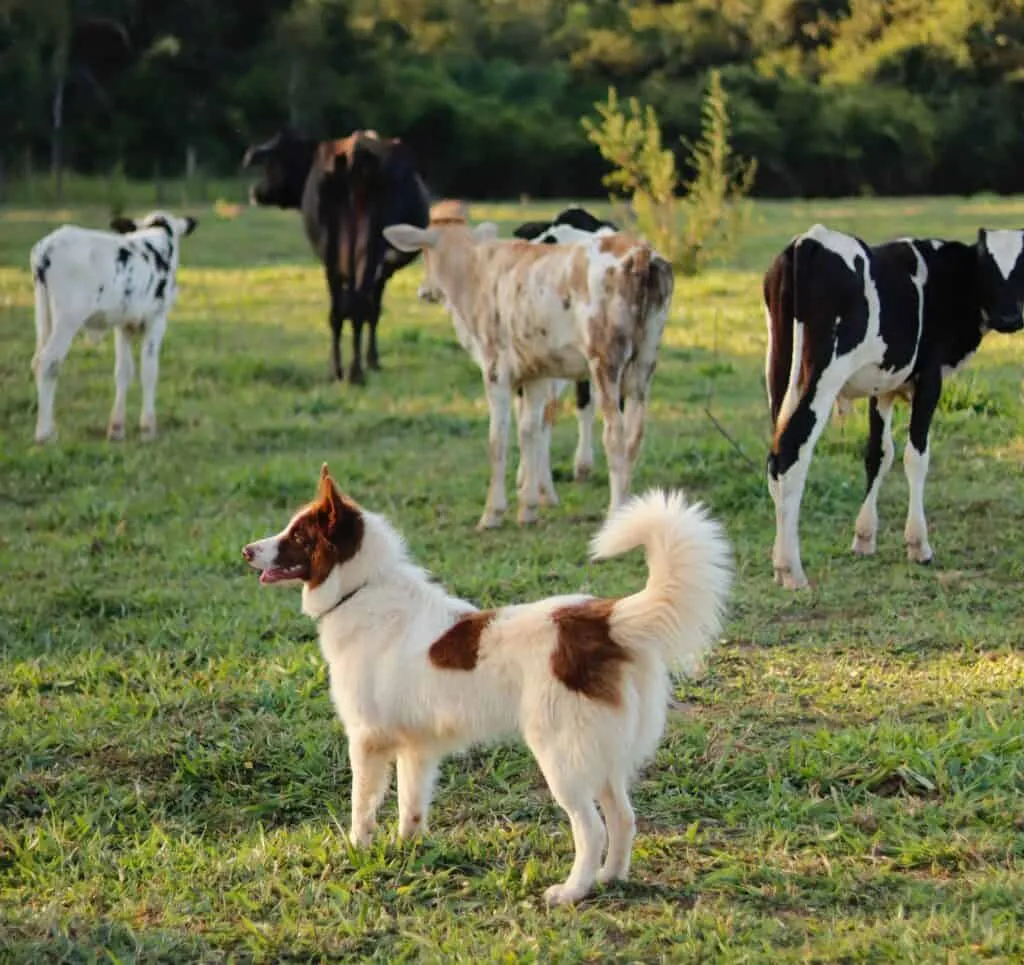
Dog Breed
Another factor that can affect your dog’s tendency to associate with or go after other dogs is its breed. A dog’s breed can influence how it would naturally react toward other dogs.
There are dog breeds that are born to hunt, herd, or guard. Some dog breeds were specifically bred for particular purposes.
However, while the breed of the dog may affect a dog’s tendencies, it is not determinative of the dog’s overall behavior.
Temperament and Training
While a dog’s breed may provide some insights into its potential tendencies, it should not be the sole determining factor in assessing its propensity to associate with or go after other dogs.
Despite being a hunting, herding, or guarding dog, a dog may still be docile or well-behaved depending on its temperament and how well he is trained.
Each dog, regardless of breed, is an individual with their own unique personality. Unsurprisingly, dogs of the same breed may exhibit different reactions to various situations depending on their temperament and experiences.
Each dog is unique, and proper socialization, training, and responsible ownership play vital roles in shaping a dog’s behavior and its ability to interact positively with other dogs.

How to Train Your Dog to Ignore Other Dogs
There are a few steps to teach your dog to ignore other dogs. Whether you are walking your dog, in the dog park, or in your yard, it is important that your dog learns to ignore other dogs when necessary and behave appropriately.
Here are some ways how to train your dog to ignore other dogs.
Socialization
Socialization is essential for dogs because it teaches them how to interact with different animals and people. Dogs who are not properly socialized may exhibit negative behavior, such as fear or aggression toward people or other dogs.
The socialization process starts during puppyhood, but adult dogs can still benefit from socialization. The key to successful socialization is to start slowly, gradually expose your puppy to new people, dogs, and environments, and use positive reinforcement techniques to encourage good behavior.
Socialize your pup as early as possible. Exposing them to various environments, people, and other dogs is essential. Puppies are more receptive to learning new behaviors at a young age.

Establishing a Strong Foundation
The first step is to establish a strong foundation. Without a solid foundation in place, any training sessions will prove hard to accomplish.
Firstly, it is important to establish a daily routine for your dog that includes regular exercise and training sessions. A dog loves consistency and thrives on routine. Establishing a regular schedule can help increase focus and retain your dog’s attention during training.
Then, proceed with desensitizing your dogs by exposing them to the presence of other dogs in a controlled environment. Every time your dogs do not react to seeing other dogs, reward them for staying calm and passive.
Over time, gradually decrease the distance between your dog and other dogs until they are able to remain calm in close proximity.
Basic obedience training is another crucial component of a strong foundation. This includes teaching your dog basic commands such as “sit,” “stay,” and “come” and reinforcing these commands consistently over time.
Gradual Exposure to Distractions
Once you have established a strong foundation in dog obedience, the next challenge to hurdle is exposing your dog to distractions.
Whether it’s another dog, a cat, or a passing car, distractions can negatively impact training sessions and leave you feeling frustrated. However, with gradual exposure to distractions, you can help your dog stay focused and obedient even in the presence of potential distractions.
After exposing your dog to the presence of another dog in a controlled environment, it’s time to bring him outdoors to introduce him to distractions. Start by getting him to observe the distractions at a distance. Decrease the distance little by little as your dog becomes comfortable with the surroundings and stays calm.
Eventually, start walking your dogs past the distraction. During this time, it may be essential to use a leash to ensure that your dog does not bolt away or chase after a distraction.
It would provide you control over your dog but still give them the freedom to move to see if they would react to the distraction. A retractable leash would be helpful for this purpose.
Lead your dog on a leash and walk near the distraction. If your dog barks at the distraction, training him to avoid excessive barking would help.
When your dogs pull on the leash to go after the distraction, the “No,” “Sit,” or “Stay” commands may help in getting them to behave.
It is also important to reward your dog every time he displays passive or calm behavior despite the distractions around him. Positive reinforcement, such as treats, praise, or your dog’s favorite toy, would also motivate him to keep ignoring distractions, including other dogs.
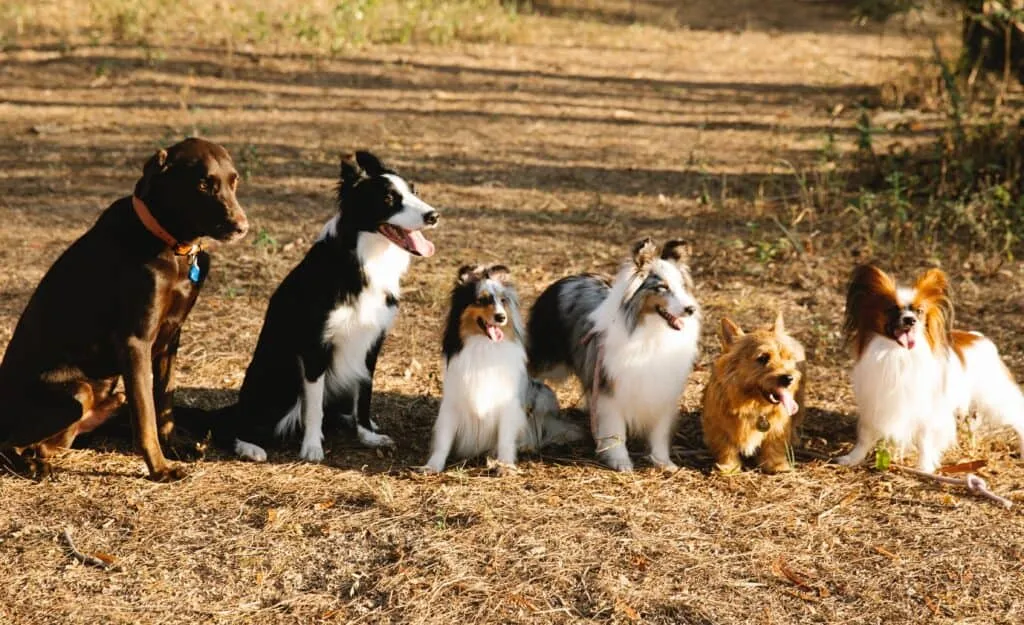
Counterconditioning Techniques
Counterconditioning is a training technique where you condition your dog to change how they react to certain situations or stimuli. In the process, you re-train your dog’s brain to associate something that previously caused fear, anxiety, or aggression with something positive and enjoyable.
This technique can be especially useful in cases where dogs display unwanted behaviors, such as barking or growling at other dogs or people.
Counterconditioning is best accomplished through classical conditioning and positive reinforcement. This technique involves changing your dog’s emotional response to a trigger by pairing it with something they love, such as a favorite toy or some treats. Your dog will begin to associate the presence of the trigger with positive rewards, creating a more positive emotional response.
During training, it’s essential to make sure that your dog understands what behavior you are rewarding them for. In addition, it is also important to give them the reward timely. You should reward your dog immediately after they perform the desired behavior for them to connect the behavior with the reward.
Consistency and Patience
Be consistent and patient in training your dog. Training your dog to ignore other dogs is a long process. But with patience and consistency, you can achieve success.
Stick to a training routine that you have set. Practice consistently and regularly. Stick to the obedience command you are working on during a set period of time until your dog understands the command before moving on to another command. This would help reinforce the command and behavior you want to instill in your dog.
Be patient. When your dog fails to get it after a few times, stay persistent and continue training him. As social animals, dogs would want to interact with other dogs. Getting them to ignore other dogs would go against their natural behavior and would entail a long training process.
To teach your dog to disregard another dog can be challenging, but consistent practice and patience are the keys.
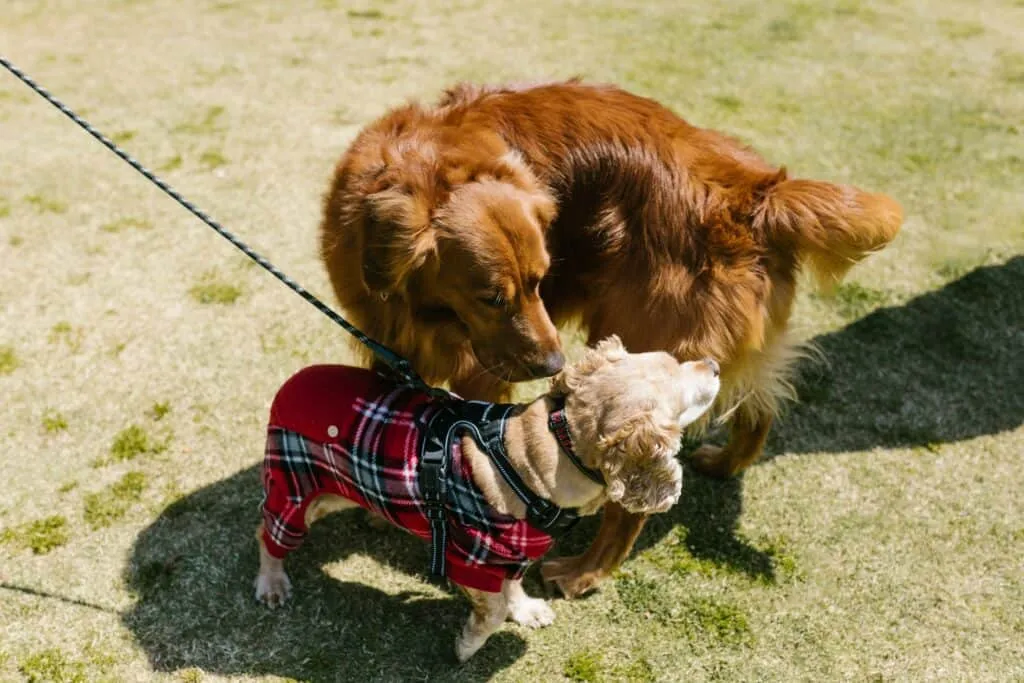
Importance of Teaching Your Dog to Ignore Other Dogs
There are several reasons why teaching your dog to ignore other dogs is important.
Teaching your dog to ignore other dogs is essential to being a responsible dog owner. As a dog owner, you should proactively foresee and prevent potential conflicts between your dog and other dogs.
It is your responsibility to ensure the well-being of your dog as well as keep it from harming other dogs. Encounters between dogs can sometimes lead to aggressive behavior or fights. This responsible behavior can foster a more positive image of dog owners in the community and promote better canine-human relationships.
Training your dog to ignore other dogs can also help curb negative behaviors such as leash pulling, excessive barking, and lunging or jumping. It will help establish better control over their behavior, making walks and outings more manageable and enjoyable.
With effective control, your dog gets to focus on you more, which could help in further training and overall obedience. Your dog is more focused on you, which will make it easier for you to teach them to respond to cues.
Ultimately, when your dog learns to ignore other dogs, they are more socially behaved despite distractions. Your dog is more relaxed and comfortable in any environment. Overall, it would make walking in public and staying in dog parks stress-free and more enjoyable for you and your dog.
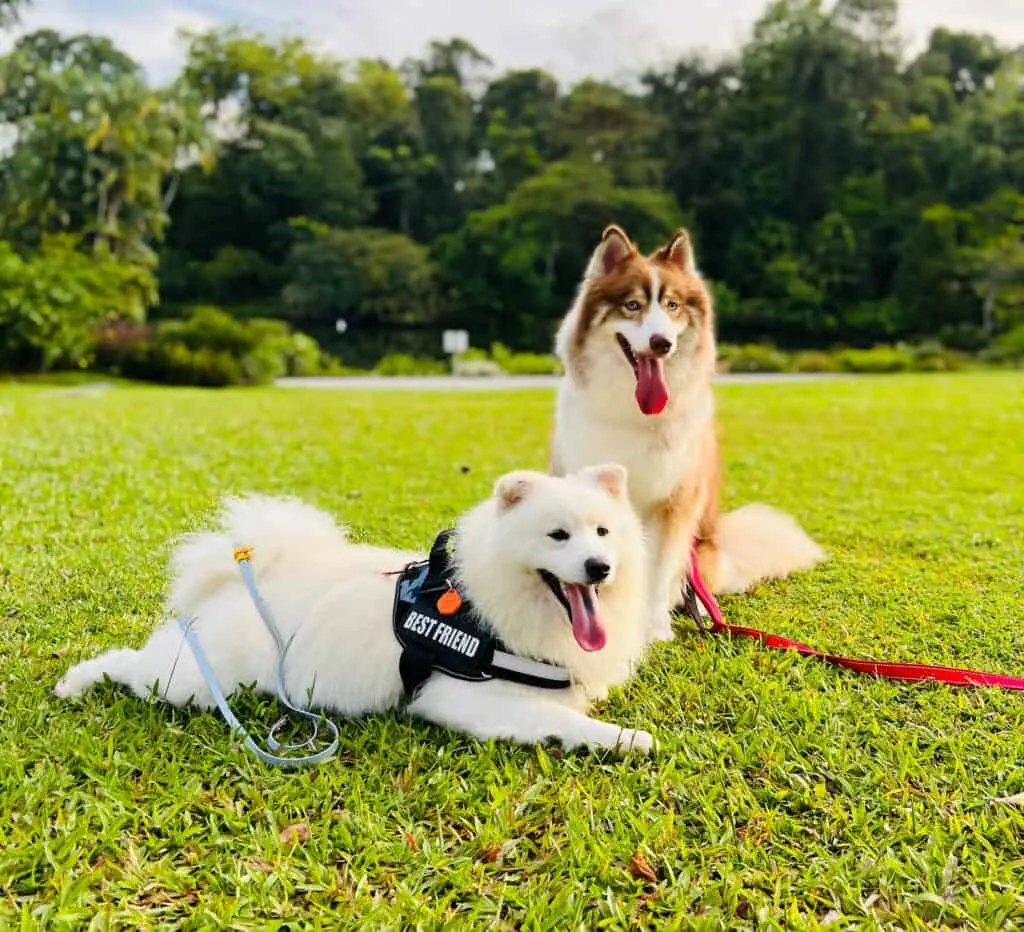
Final Thoughts
Remember, teaching your dog to ignore other dogs should not mean isolating them from all social interactions. Proper socialization is still important for their overall development.
However, by teaching them to remain calm and focused in the presence of other dogs, you can create a harmonious and controlled environment that benefits everyone involved.
When you find it too hard to teach your dog to disregard other dogs, or you cannot seem to keep your dog’s attention during training, do not hesitate to consult or engage the services of a dog trainer.
A pet behavior specialist can also help you understand where to begin on your journey of growing a well-behaved dog.